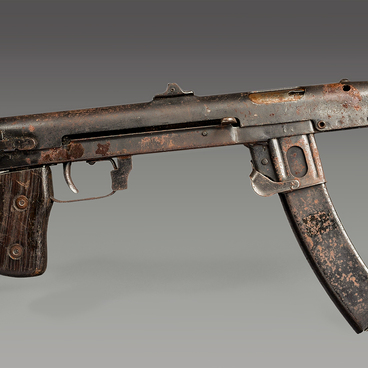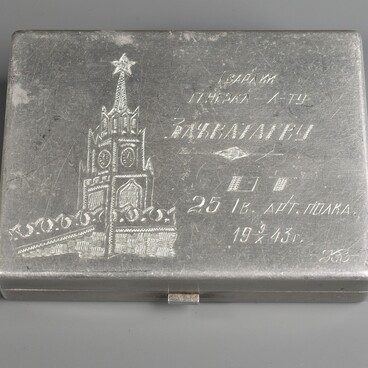The belts were presented to the Hero of the Soviet Union Fyodor Kostin by residents of Lithuanian cities as a sign of gratitude for the liberation of the Baltic States from the Nazi invaders. Kostin served as a sniper on the Western Front during the Great Patriotic War. He especially distinguished himself in the battles for the liberation of the Baltic States. Kostin was one of the first to cross the State border of the USSR with Lithuania.
On July 16, 1944 he crossed the river Neman with a group of soldiers, gained a foothold on the bridgehead and with fire provided the crossing of the battalion. On August 17, 1944, he replaced the retired company commander and was one of the first to reach the State Border of the USSR near the town of Kudirkos-Naumestis.
The strategic offensive operation of the Soviet troops to liberate Estonia, Latvia and Lithuania, which lasted 71 days, was called the Baltic. It included four front-line and inter-front operations: Riga, Tallinn, Moonsund and Memel.
Control over the Baltic States allowed the German fleet to operate in the Eastern part of the Baltic Sea and maintain the contact with the Scandinavian countries, which supplied Germany with strategic materials. In addition, oil shale processing plants operated in Estonia, thanks to which Germany received about 500 thousand tons of petroleum products per year. The Fascists also received a significant amount of agricultural raw materials and food from the Baltic States.
The troops of the 2nd and 3rd Baltic Fronts, the Leningrad Front and the Baltic Fleet became the striking force. The offensive began on September 14, 1944. The troops of the Baltic fronts advanced in the Riga direction. Despite fierce resistance, already on the first day the first line of defense managed to break through.
The Germans concentrated their main forces in areas North of the Western Dvina, but they could not contain the onslaught of Soviet troops and were forced to withdraw their troops to East Prussia. At the same time, the troops of the Leningrad Front and the Baltic Fleet launched an offensive on Tallinn. Within 10 days they defeated 4 infantry divisions and 5 artillery regiments.
After liberating the city, the Soviet troops began preparations for the Memel operation, which was also successful: the troops of the enemy army group ‘North’ were cut off from East Prussia. Units of the Red Army reached the Baltic Sea, and on November 24, 1944, Soviet troops eliminated the last remnants of German troops in the West Estonian archipelago.
On July 16, 1944 he crossed the river Neman with a group of soldiers, gained a foothold on the bridgehead and with fire provided the crossing of the battalion. On August 17, 1944, he replaced the retired company commander and was one of the first to reach the State Border of the USSR near the town of Kudirkos-Naumestis.
The strategic offensive operation of the Soviet troops to liberate Estonia, Latvia and Lithuania, which lasted 71 days, was called the Baltic. It included four front-line and inter-front operations: Riga, Tallinn, Moonsund and Memel.
Control over the Baltic States allowed the German fleet to operate in the Eastern part of the Baltic Sea and maintain the contact with the Scandinavian countries, which supplied Germany with strategic materials. In addition, oil shale processing plants operated in Estonia, thanks to which Germany received about 500 thousand tons of petroleum products per year. The Fascists also received a significant amount of agricultural raw materials and food from the Baltic States.
The troops of the 2nd and 3rd Baltic Fronts, the Leningrad Front and the Baltic Fleet became the striking force. The offensive began on September 14, 1944. The troops of the Baltic fronts advanced in the Riga direction. Despite fierce resistance, already on the first day the first line of defense managed to break through.
The Germans concentrated their main forces in areas North of the Western Dvina, but they could not contain the onslaught of Soviet troops and were forced to withdraw their troops to East Prussia. At the same time, the troops of the Leningrad Front and the Baltic Fleet launched an offensive on Tallinn. Within 10 days they defeated 4 infantry divisions and 5 artillery regiments.
After liberating the city, the Soviet troops began preparations for the Memel operation, which was also successful: the troops of the enemy army group ‘North’ were cut off from East Prussia. Units of the Red Army reached the Baltic Sea, and on November 24, 1944, Soviet troops eliminated the last remnants of German troops in the West Estonian archipelago.



